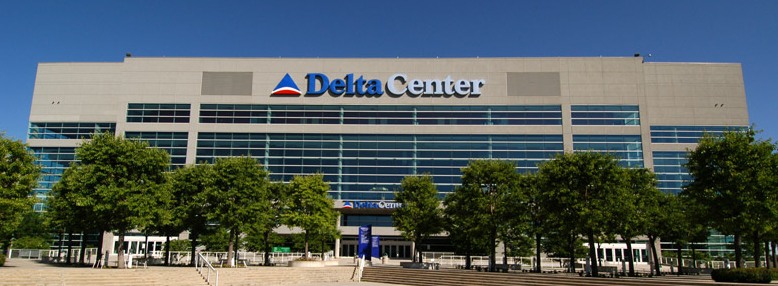
Naming rights
Naming rights are a financial transaction and form of advertising or memorialization whereby a corporation, person, or other entity purchases the right to name a facility, object, location, program, or event (most often a sports venue), typically for a defined period of time. For properties such as multi-purpose arenas, performing arts venues, or sports fields, the term ranges from three to 20 years. Longer terms are more common for higher profile venues such as professional sports facilities.[1]
The distinctive characteristic for this type of naming rights is that the buyer gets a marketing property to promote products and services, promote customer retention and/or increase market share.
There are several forms of corporate sponsored names. For example, a presenting sponsor attaches the name of the corporation or brand at the end (or, sometimes, beginning) of a generic, usually traditional, name (e.g. Mall of America Field at Hubert H. Humphrey Metrodome); or, a title sponsor replaces the original name of the property with a corporate-sponsored one (as is the case with most sponsored sports venues), with no reference to the previous name.
Social connotations[edit]
In some places, and especially in the UK and United States, the naming or renaming of arenas or events is usually met with disapproval from the general public. Some people see it as an example of a selling out,[30][31][32][33] especially when they see no obvious benefit to themselves. They often refuse to use a new name, preferring instead to use a non-branded name, especially in colloquial situations. Rebranding can also lead to confusion.[34] In such cases, there may be a lengthy period during which the property is known by both names. A common example is Willis Tower in Chicago which was and often still is referred to as the "Sears Tower", even though the building was sold in 1994 (but retained its former name until 2003).[35]
Sporting events such as the FIFA World Cup, UEFA Euro, Olympic Games and the Paralympic Games prohibit the use of corporate-sponsored name on stadiums, construing the practice as a form of ambush marketing. Any stadium that uses a corporate-purchased name must always be referred to in all event-related media (including live broadcasts) by a generic name (e.g., General Motors Place was referred to as "Canada Hockey Place" during the 2010 Winter Olympics). On the other hand, Toyota Stadium was referred to as "City of Toyota Stadium" during the 2019 Rugby World Cup to avoid confusion as a form of ambush marketing, although the stadium is not named after Toyota Motor Corporation, but the name of the city in which the stadium is located. The regular corporate signage of a site, including billboards and deck advertising, is usually covered up in these cases; in the FIFA case the signage is replaced solely with FIFA sponsors. However, with the near-universal use of LED ribbon boards, scoreboards, and sideline boardings since the mid-2000s in most major league sites where only known sponsors have advertising displayed, "neutralizing" an arena has become a much easier process than in the past.
Regina, Saskatchewan's REAL District was formerly named "Evraz Place"; when discussing its 2022 rebranding, its owner Regina Exhibition Association Limited stated that it had sometimes received shipments and communications meant for the Evraz steel company – mistakenly believing that the company's North American division was based there.[36][37] However, the main motivation for accelerating the name change was the perceived need to disassociate with the steel company, largely owned by Russian oligarchs, following the 2022 Russian invasion of Ukraine.
Nonprofit usage[edit]
A nonprofit organization has the option to recognize a major gift from a donor by bestowing naming rights to a property in recognition of the financial support. This is not a financial transaction in the style of the private sector. For example, in honor of the more than $60 million donated over the years by one donor to the National Air and Space Museum properties, the directors of the Smithsonian Institution chose to name its satellite facility in Loudoun County, Virginia, after the donor, calling it the Steven F. Udvar-Hazy Center.[38]
Walgreen Coast, a portion of the coast of Antarctica, was so named because the Walgreens pharmacy chain sponsored the Byrd Antarctic Expedition.[39]